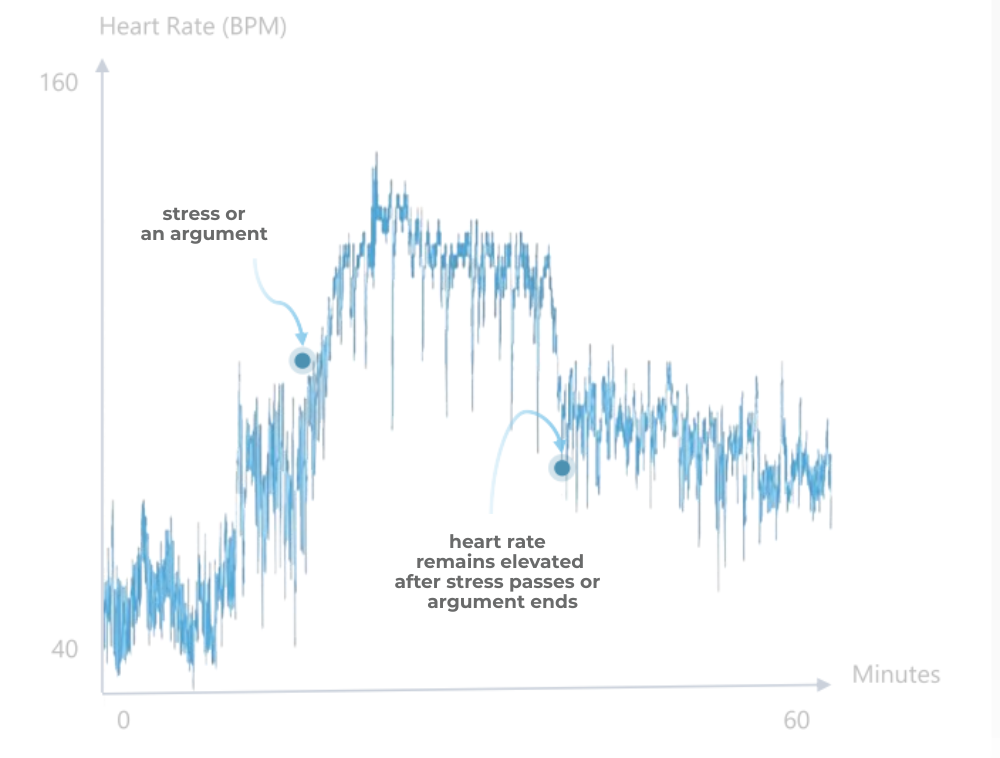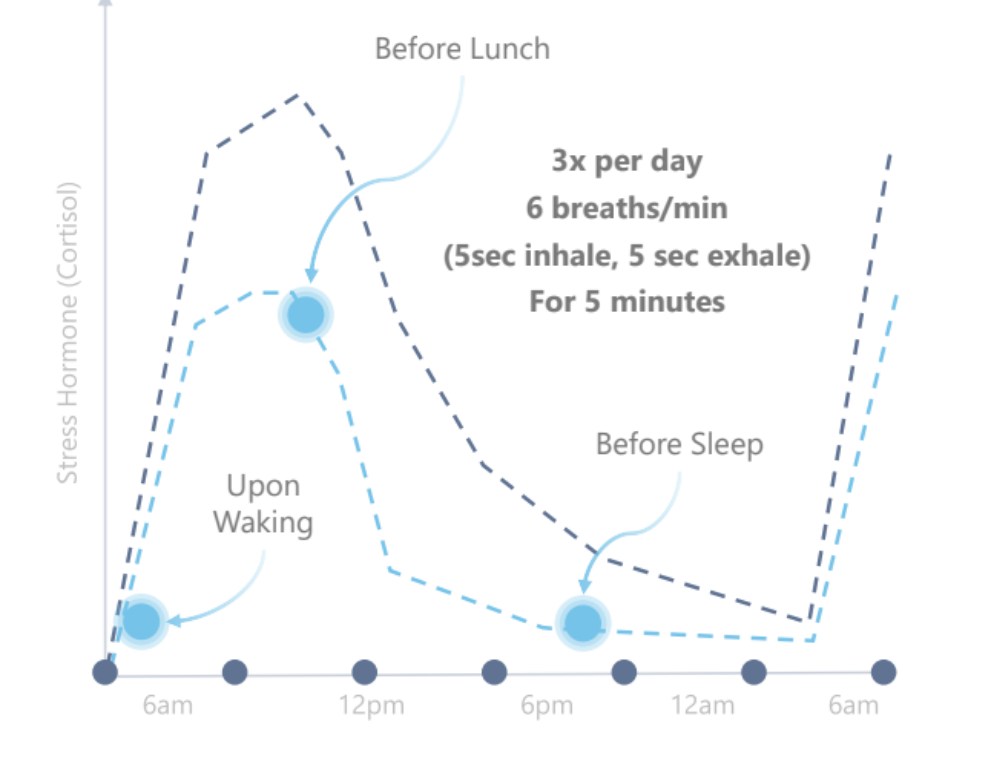don’t forget to breathe
We take that inhale-exhale thing for granted. We simply assume we’re doing it properly – I mean, we’re still alive, right ?
But how we breathe can have big impacts on our body, our health and our mind. Breathing fast and/or shallow can induce stress, while breathing slow can help to calm. Nasal breathing is ideal, while mouth breathing can precipitate many health issues.
Of the many breathing tools, coherent breathing is one of the simplest to help reduce stress – both to help bring the body down from a stressful event, and as a preventative tool to buffer the day’s stresses.
Coherent breathing
Coherent breathing is a slow, rhythmic breathing technique that involves inhaling and exhaling deeply and evenly with no pauses in between breaths.
A rate of 5-6 breaths per minute is ideal – which is about 5-6 seconds for each inhale, and another 5-6 seconds for each exhale. This rate brings about a state of physiological coherence, where your heart rate and breathing become synchronised.
Inhale slowly through the nose, feeling your belly expand. Exhale slowly and completely. And repeat.
Even just one minute of coherent breathing can bring a benefit, although 5 minutes is the ideal. And that benefit can last for hours.
Breathe after you’ve experienced a stress
Our modern lives hit us with stresses every day.
Sometimes those stronger stresses – an argument, a traffic incident, rushing for the train – can leave an impact beyond the stressful event. Our heart is still racing, we haven’t yet calmed down.
Even just a minute of coherent breathing can help lower stress and bring your heart rate back down to normal.

Breathe to help buffer stress
We don’t usually know when stress is going to hit us, but we can be pretty sure that something will at some point during the day.
15 minutes of your time – 5 minutes, 3 times a day – can help buffer those stresses, and help you cruise through the day a little better. That 5 minutes of coherent breathing will have a positive impact for hours. Try it soon after waking (before coffee!!), before lunch, and in late afternoon.

How to get that timing right ?
There’s a multitude of apps and videos on YouTube to guide you through that breath rate.
I’m tending to use an app called “Breathing Zone”, where I can dial in my breathing rate. It’s not fancy, but it’s free.
